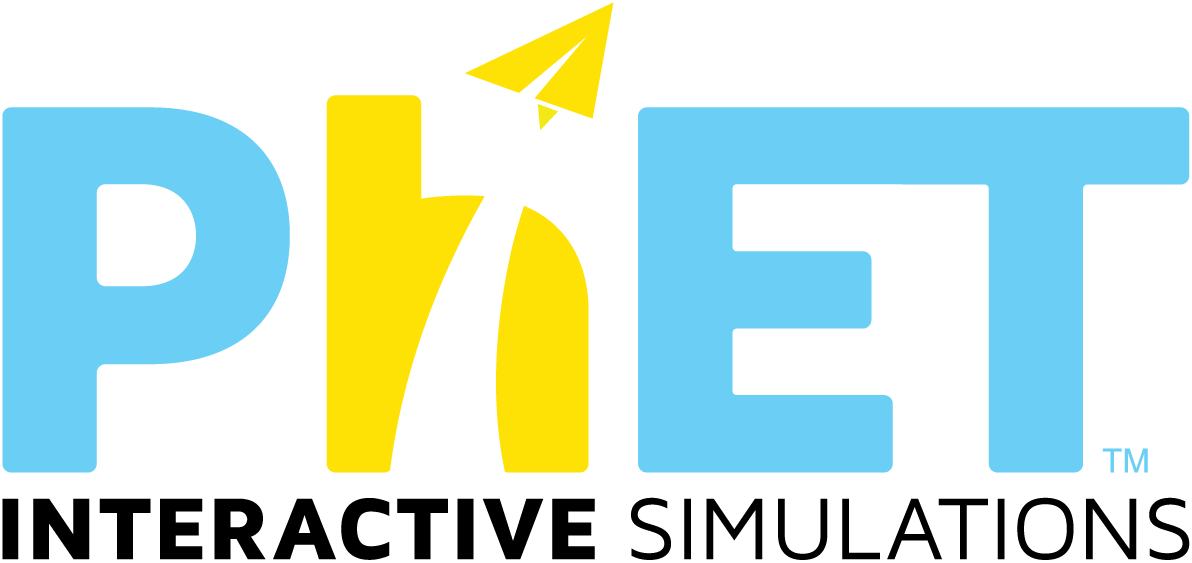334 pasujących rezultatów wyszukiwania Middle School
Symulacje
- Arytmetyka (HTML5)
- Balony i pole elektrostatyczne (HTML5)
- Balony i siła wyporu
- Balony i statyczne pole elektryczne
- Beta Decay
- Bilansowanie Równań Chemicznych (HTML5)
- Budowniczy powierzchni (HTML5)
- Budujemy atom (HTML5)
- Budujemy cząsteczkę (HTML5)
- Budujemy jądro (HTML5)
- Ciężarki na sprężynach (HTML5)
- Ciężarki na sprężynach
- Ciężarki na sprężynach: podstawy (HTML5)
- Obwody prądu stałego - wirtualne laboratorium (HTML5)
- Ciśnienie i Przepływ Cieczy
- Cząsteczki i promieniowanie elektromagnetyczne (HTML5)
- Czworokąty (HTML5)
- Datowanie Gra
- Deska Galtona (HTML5)
- Dodawanie wektorów (HTML5)
- Dodawanie wektorów: równania (HTML5)
- Dopasowanie krzywej (HTML5)
- Doświadczenie Rutherforda (HTML5)
- Dyfuzja (HTML5)
- Dźwięk
- Efekt cieplarniany (HTML5)
- Efekt cieplarniany
- Efekt fotoelektryczny
- Ekspresja genu - podstawy (HTML5)
- Ekspresja genu - podstawy
- Electric Field of Dreams
- Elektromagnetyczne laboratorium Pana Faradya
- Elektryczny hokej - zapożyczony z pracy Ruth Chabay
- Energia w skateparku (HTML5)
- Energia w skateparku: podstawy (HTML5)
- Fabryka genów: Operon Laktozowy
- Fale na linie (HTML5)
- Fale radiowe
- Fale - wstęp (HTML5)
- Formy energii i ich przemiany (HTML5)
- Fourier: Konstruowanie fal (HTML5)
- Fourier: Konstruowanie fal
- Funkcje trygonometryczne (HTML5)
- Gazy - właściwości (HTML5)
- Gazy - wstęp (HTML5)
- Generator (HTML5)
- Gęstość (HTML5)
- Gra liczbowa (HTML5)
- Grawitacja, a orbity (HTML5)
- Interferencja fal (HTML5)
- Izotopy i masa atomowa (HTML5)
- John Trawoltaż (HTML5)
- Jasio Woltuś
- Jedz i Ćwicz
- Kondensatory Lab
- Kondensatory Lab: podstawy (HTML5)
- Kontrola kształtu impulsu
- Kreator wykresu równania
- Kształty cząsteczek (HTML5)
- Kształty cząsteczek: podstawy (HTML5)
- Kwasowość i zasadowość roztworów (HTML5)
- Labirynt - Gra
- Laboratorium elektromagnetyczne Faradaya (HTML5)
- Lampa neonowa i inne lampy wyładowawcze
- Lasery
- Lądownik księżycowy
- Lodowce
- Ładunki i pola (HTML5)
- Magnes i kompas (HTML5)
- Magnesy i elektromagnesy (HTML5)
- Mikrofale
- Modele atomu wodoru (HTML5)
- Modele atomu wodoru
- Model membrany
- Model pola - mnożenie (HTML5)
- Model pola - ułamki dziesiętne (HTML5)
- Model pola - wstęp (HTML5)
- Model pola - wyrażenia algebraiczne (HTML5)
- moment siły
- Mój Układ Słoneczny (HTML5)
- napięcie ogniwa
- Neuron (HTML5)
- Obwody prądu przemiennego (HTML5)
- Obwody prądu przemiennego - wirtualne laboratorium (HTML5)
- Obwód bateria-rezystor
- Obwód elektryczny
- Odbicie i załamanie światła (HTML5)
- Oddziaływanie atomów (HTML5)
- Optyka geometryczna (HTML5)
- Optyka geometryczna: podstawy (HTML5)
- Oszacowania
- Oś liczbowa: działania (HTML5)
- Oś liczbowa: liczby całkowite (HTML5)
- Oś liczbowa: odległość (HTML5)
- Pary liczb (HTML5)
- Pochodne i całki - wykresy (HTML5)
- Pod Ciśnieniem (HTML5)
- Polaryzacja Cząsteczek (HTML5)
- Polaryzacja Cząsteczek
- Pomiar kwantowy (HTML5)
- Porównywanie liczb (HTML5)
- Porównywanie ułamków (HTML5)
- Poruszający się człowiek
- Poznajemy równania (HTML5)
- Poznajemy równania - dwie niewiadome (HTML5)
- Poznajemy równania - podstawy (HTML5)
- Prawa Keplera (HTML5)
- Prawo Beera (HTML5)
- Prawo Coulomba (HTML5)
- Prawo Faradaya (HTML5)
- Prawo Ohma (HTML5)
- Promieniujący ładunek
- Proporcjonalność prosta (HTML5)
- Proste: nachylenie, przecięcie z osią (HTML5)
- Przewodnictwo
- Reakcje i ich szybkości
- Reakcje odwracalne
- Regresja (najmniejsze kwadraty) (HTML5)
- Rezonans
- Rezystancja przewodnika (HTML5)
- Rozpad alfa
- Rozpad jądra
- Roztwory cukru i soli
- Równia pochyla
- Równia pochyła: siły i ruch
- Równowaga (HTML5)
- Ruch biedronki w 2 wymiarach
- Ruch dwuwymiarowy
- Rzut monetą kwantową (HTML5)
- Rzuty (HTML5)
- Rzuty - laboratorium danych (HTML5)
- Rzuty - rozkłady próbkowania (HTML5)
- Selekcja naturalna (HTML5)
- Siła wyporu (HTML5)
- Siła wyporu: podstawy (HTML5)
- Siły Grawitacyjne Lab (HTML5)
- Siły Grawitacyjne Lab - podstawy (HTML5)
- Siły i ruch
- Siły i ruch: Podstawy (HTML5)
- Siły w jednym wymiarze
- Skala pH (HTML5)
- Skala pH: podstawy (HTML5)
- Sole i rozpuszczalność
- Stany skupienia: podstawy (HTML5)
- Stany skupienia materii (HTML5)
- Stężenie (HTML5)
- Stężenie Molowe (HTML5)
- Stosunek i proporcja (HTML5)
- Substraty, Produkty i Pozostałości (HTML5)
- Średnia: rozdziel po równo (HTML5)
- Tarcie (HTML5)
- Tektonika płyt
- Tendencja centralna i zróżnicowanie (HTML5)
- Traf dziesiątkę (HTML5)
- Transport błonowy (HTML5)
- Tworzenie funkcji (HTML5)
- Tworzenie funkcji - podstawy (HTML5)
- Ułamki: liczby mieszane (HTML5)
- Ułamki: równość (HTML5)
- Ułamki: wstęp (HTML5)
- Uproszczony MRI
- Wahadło matematyczne (HTML5)
- Widmo ciała doskonale czarnego (HTML5)
- Widzenie kolorowe (HTML5)
- Wykresy funkcji kwadratowych (HTML5)
- Wykresy prostych (HTML5)
- Wyrażenia algebraiczne (HTML5)
- Zabawa w proporcje (HTML5)
- Zakręcona Biedronka
- Zbuduj ułamek (HTML5)
- Zderzenia Lab (HTML5)
- Obwody prądu stałego (HTML5)
- Prawo Hooke'a (HTML5)
Aktywności
- Gas Properties-Inquiry Middle School
- Sound_Inquiry for Middle School
- Balloons and Static Electricity for Middle School
- Circuit inquiry for Middle school
- Conservation of Energy for Middle School
- Projectile investigation for Middle School
- Pendulum investigation for Middle School
- States of Matter for Middle School
- Gas Investigation for Middle School
- Ramp Middle School Inquiry
- Energy Skate Park for Middle School(Inquiry Based)
- Energy Skate Park Basics
- Middle School Math Sim Alignment
- Density Exploration
- NGSS Alignment Doc for Middle School targeted PhET Sims
- Air Resistance Lesson
- Forces and Motion Lesson
- Chemistry Theater
- Energy Skate Park Basics Lesson
- Natural Selection Lesson by UTeach
- Balloons and Static Electricity
- Density Lesson (with Putty Lab)
- Build an Atom
- Gravity and Orbits Lesson
- Experimental Design with Forces
- Hot Air Balloons Lesson
- Building Fraction Sense Using “Fractions Intro PhET Simulation”
- Wave Basics for Middle Schoolers
- Middle School - Electric Circuits
- States of Matter Simulation
- Two Types of Energy - Mass & Spring
- Build a Molecule
- States of Matter Simulation Lab
- Properties of Waves - Lab Guide
- Middle School and High School Common Core Alignment Document
- Pendulum variables
- Reactions and Rates
- Force introduction
- How do PhET simulations fit in my middle school program?
- Net force
- Investigating Net Force
- Middle School Science
- Heat it Up
- Mixing paint with ratios
- Using the area model with expressions
- Properties of representations of linear functions
- Color Vision pHet Lab
- Middle School - series and parallel circuits
- Describing Location and Movement
- Gas Laws
- Density-introduction
- Exploring EM Forces
- Molecules and Light-inquiry for high school
- Induction (high school version) (Inquiry Based)
- Inquiry Activity: Waves
- Pendulum Virtual Lab 2021
- Arbeitsblatt Natürliche Selektion
- Balanced and Unbalanced Forces - What Causes Acceleration
- Using PhET in High School Chemistry- all my activities in pdf
- the advantages of species physical appearances corresponding to living environment
- Speed of a Wave NGSS aligned
- Molarity Simulation
- Reaction Rates
- Isotopes
- Arithmetic Games (Inquiry Based)
- Sound Waves
- Energy Transfer
- PhET: Energy Forms Worksheet
- Basics of Electricity
- Homework Activity I
- Forces and Motion Basics Interactive Activity
- Pendulum Lab: What Affects the Period?
- PhET Lab States of Matter Basics
- Gravity Lab
- High School Inclusion Class Density Lab
- PhET Interactive Lab on pH
- Measurements of Density
- THE MOVING MAN: DISTANCE, DISPLACEMENT, SPEED & VELOCITY
- High School Chemistry 1 level Balancing Equations
- High School Chemistry 1 level: Limiting reagents
- Visual Nucleosynthesis [Basic High School]
- Collecting and analyzing density data
- Greenhouse effect activity
- PHET: Masses and Springs 2021
- High School Exploratory Lab for Balloons and Static Electricity
- Electric Fields of Dreams for High School Exploratory Lab
- Exploring the density of mysterious objects
- Float or Sink? An essay on the density of materials
- Conservation of Energy - conceptual
- Wave Interference- Waves (Sound and Light)
- Comparing the properties of different materials
- What Type of Light Bulb Should I buy for my Grandma?
- Projectile Motion
- Introduction to Waves: Liquid Matter, Sound, and Light
- Exploring Chemical Reactions and the Law of Conservation of Mass
- States of Matter - Lab Simulation - student procedures and questions
- Lesson Plan for Teaching Shapes of Molecule
- Induction (college homework version) (Inquiry Based)
- Bunny Blitz
- PhET Energy Forms and Changes Virtual Lab
- (BNCC) Comparando as propriedades de diferentes materiais
- Projectile Motion Discovery
- Geometric figures
- Colors, Bunnies and Wolves: does the strongest survive?
- Water Waves in an Electric Sink
- Simple Pendulum
- Opdrachten bij Reactanten, producten en resten
- Conservation of Energy Exploration with Skatepark Physics
- The Simple Pendulum- What affects the Period of the pendulum?
- Bending Light Student Worksheet
- Lens Inquiry
- Molecule Shapes Advanced
- Gravity Force Lab
- Investigating Forces and Motion Through Inquiry
- Exploring Stars and Blackbodies
- Experiment to determine relationship between wavelength, frequency and speed
- Ohm's Law Lab - Virtual
- Ray Diagrams for Concave and Convex Mirrors
- Electromagnetic Induction
- Making STABLE Atoms Lab
- Force and Motion Basics - Second grade
- Refraction
- Reactions and Rates: Learning Goals from the design team (Inquiry Based)
- Projectile Motion Lab #2
- Conservation of Energy (Energy Skate Park)
- Moving Man II: Acceleration vs. Time
- Moving Man I: Velocity vs. Time Graphs
- Charges and Fields
- Ohm's Law, Kirchhoff's Laws, Resistors in Parallel and Series Lab
- The Two-Plate Special
- Energy Forms and Changes
- Balancing equation
- Introduction to Current, Voltage, and Resistance
- Projectile Motion
- Bouncing Off the Walls
- Heat or temperature
- My Solar System
- Exploring the Energy Skate Park
- Newton's Second Law of Motion
- Charges and Charged Objects Investigation
- 'Lectronic Plates
- Pixel Peeping
- Moving Man Motion Graph Review
- Magnet and Compass
- Spring Force, Spring Constant and Elastic Potential Energy
- Heat or temperature?
- Build An Atom Guided Inquiry
- Introduction to the Gas Laws using PhET simulations
- Quest for the Coulomb Cup
- Cavendish Lab
- MS and HS TEK to Sim Alignment
- DC Circuit Lab
- Projectile Motion Worksheet
- Greased Lightning
- Introduction to the gas laws
- Harmonic oscillator
- Worlds of Wonder
- Beer's Law Lab: Introduction to Beer's Law
- Electric Field Hockey Post-Game Analysis
- Atomic Models and Spectroscopy
- Computer Simulations as a Tool to Assist Teaching Basics of Electromagnetism (Simulações Computacionais Como Ferramenta Auxiliar ao Ensino de Conceitos Básicos de Eletromagnetismo)


